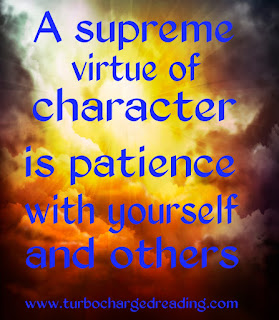5 Simple Ways To
Be A Better Listener
Seth Simonds
Are you really
listening?
In my journey toward better communication,
here are 5 ways
I’ve found to help reduce the distractions we face in communication:
1. Clear some
space –
I started “clearing space” by removing everything from my
work area that wasn’t related to
the conversation at hand. As the notion of space trickled
into other parts of my life, I found myself silencing my phone during meals. I
started taking notes during presentations instead of Tweeting. And I gave pause
after others spoke before replying. I soon discovered that I wasn’t
just getting more out of conversations; I was finding
more value in time spent alone!
2. Control your
limbs –
You’ve probably been in conversations with people who
talk with their limbs; most use their hands. Listening with limbs is another
story. Confession: I am a pen-clicker. You know those annoying people who click
their pens without realizing it? I am one. If I click my pen while you’re
talking,
you’ll probably be distracted. If I rearrange my
silverware at dinner while you’re talking, you’ll be distracted. So I got rid
of my click-able pens and made a point to avoid behaviors that not only
distracted others but also caused them to think I wasn’t listening (in most
cases, I probably wasn’t).
3. Ask questions –
I’ve found that the best listeners make a regular
practice of asking thoughtful questions.
When you reach a pause in conversation, ask a question
that clarifies a previous point or helps to
dig deeper into the topic of
conversation. The person or group you’re talking to will gain value
from your question and you’ll find it easier to resist
distractions because your mind is fully engaged.
4. Make a move –
When you know you’ll be sitting for an extended period of
time (shareholder meeting at work,
looking through a 450-page photo album with
Auntie Dorothy, etc),
put in a few minutes of exercise ahead of time.
There’s
no need to break a sweat, just put in enough effort so your breathing deepens.
When you go to sit, you’ll have more blood running to your brain for thinking
and the chair might actually feel comfortable following
your effort.
I’m afraid no amount of exercise will make folding metal
chairs comfortable. I’m sorry.
5. Enforce a
“no-fly zone” –
This is a block of time you set aside each day that is
completely free from the buzzing flotsam
of media and work inputs. Silence your phone, close the
laptop, put away the papers,
and try your hardest not to even think about the big
distractions that follow you around.
Do some crunches. Lie on the floor and watch the ceiling
fan spin. Hang out with your kids
if you’ve got them. If you don’t have kids, hang out with
some kids who need your positive influence. Knock something off your “honey-do”
list and chat with your partner. Enforce your “no-fly zone” religiously and
you’ll soon find a sense of clarity creeping into other aspects of your life.
Becoming a better listener takes effort and, most
importantly, patience.
Be warned, however, for once you start truly listening
you may find the process habit-forming.
When people know they are being heard
they tend to share amazing things
we certainly would have missed otherwise.
Looking back, has there been a moment when everything
would have been different
had you been a better listener?
http://www.lifehack.org/articles/communication/5-simple-ways-to-be-a-better-listener.html
Turbo Charged Reading: Read
more>>>Read fast>>>Remember all>>>Years later
You can TCR software and engineering manuals for spontaneous recall – or pass that exam.
I can Turbo Charge Read a novel 6-7 times
faster and remember what I’ve read.
I can TCR an instructional/academic book
around 20 times faster and remember what I’ve read.
Perhaps you’d like to check out my sister blogs:
All aspects of regular, each-word reading and education.
Turbo Charged Reading uses these skills significantly faster
www.ourinnerminds.blogspot.com
Personal business
development.
www.happyartaccidents.blogspot.com
just for fun.
To quote the Dr Seuss himself, “The more that you read, the
more things you will know.
The more that you learn; the more places you'll go.”










